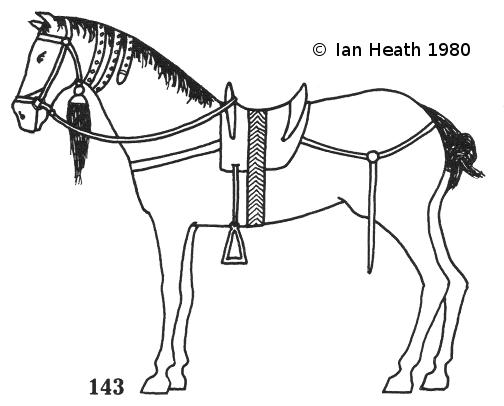BYZANTINE CAVALRY HORSE
An extract from Armies of the Dark Ages 600-1066by Ian Heath


143. BYZANTINE CAVALRY HORSE
This shows typical Byzantine harness as would have been used by trapezitae, most Thematic troops, and probably some auxiliaries. The saddle is high front and back, with girth, breast and rump straps. It is positioned on a hide or sheepskin blanket which could be folded to various thicknesses to suit the horse’s condition. There is a snaffle bit, harness and bridle are of yellowish leather (often dyed red), and the iron stirrups are worn long. The knotting of the tail is characteristically Eastern and was probably the result of Persian or Asiatic influence.
Plumes at throat, forehead and suspended from breast and rump straps are recorded in some sources but are not often shown in contemporary illustrations.
Byzantine horses were bred and trained at special stud-farms and supplied to the government as and when needed, although at the very beginning of this period the Strategicon records that cavalrymen had to supply their own mounts; such was also true of Thematic cavalry. Other horses were compulsorily donated by the church and nobility, or supplied as a form of exemption from service — in the mid-10th century the Peloponnesos Thema certainly excused itself from an Italian campaign by a payment of gold and 1,000 fully-equipped cavalry horses.